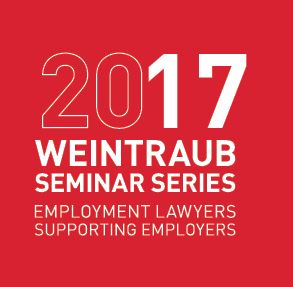New Year, New Laws
Published: January 9, 2017
Happy New Year! The new year frequently marks new changes in the law, and this year is no exception. There are several important changes that went into effect on January 1st. Here are some of the major changes that went into effect on January 1, 2017:
- Minimum Wage Change: On January 1st, for employers with 26 or more employees, the California minimum wage will increase to $10.50/hour. The minimum wage remains at $10.00 for employers with 25 or fewer employees. Employers with 26 or more employees should use the $10.50 rate to determine the “salary basis” for exempt employees.
- Arbitration Agreements: Beginning January 1st, California employees cannot be required to enter into agreements (including employment and arbitration agreements) requiring them to apply another state’s laws to their disputes, or agree to litigate in any venue outside of California, unless the employee had advice of counsel.
- Immigration Verification: Existing law prohibits an employer for engaging in certain actions related to immigration, like refusing to honor immigration documents that appear to be genuine. Under the new law, it is unlawful for an employer to refuse to honor documents based on the status or term of the person’s work authorization. Additionally, it is unlawful to reinvestigate or re-verify an incumbent employee’s authorization to work. For more information on this law, contact one of our attorneys to make sure you are in compliance.
- Wage Discrimination: Existing law generally prohibits employers from paying an employee lower wages than those paid to employee of the opposite sex for the same job and requires the same skill, effort, and responsibility. A pay difference can, however, be based on several factors including seniority, merit, quantity/quality of production, or a bona fide factor other than sex (like education, training, or experience). This new law provides that, effective January 1, an employee’s prior salary alone cannot justify a difference in compensation as a bona fide factor. Additionally, these requirements were expanded to include differences in race as well as sex.
- Asking about Juvenile Proceedings on Job Application: The new law prohibits an employer from asking an applicant for employment to disclose, or from utilizing as a factor in determining any condition of employment, information related to an arrest, detention, adjudication, or court disposition that occurred while the person was subject to juvenile court. Some exceptions apply for certain employers, like health facilities.
If you have any questions about whether your particular business practices are compliant with these laws, or need assistance updating your employment and arbitration agreements, please contact one of our labor and employment attorneys.



